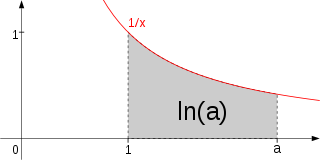Loading AI tools
Belgian Jesuit and mathematician (1584–1667) From Wikipedia, the free encyclopedia
Grégoire de Saint-Vincent (French pronunciation: [ɡʁeɡwaʁ də sɛ̃ vɛ̃sɑ̃]) - in Latin : Gregorius a Sancto Vincentio, in Dutch : Gregorius van St-Vincent - (8 September 1584 Bruges – 5 June 1667 Ghent) was a Flemish Jesuit and mathematician. He is remembered for his work on quadrature of the hyperbola.

Grégoire gave the "clearest early account of the summation of geometric series."[1]: 136 He also resolved Zeno's paradox by showing that the time intervals involved formed a geometric progression and thus had a finite sum.[1]: 137
Grégoire was born in Bruges 8 September 1584. After reading philosophy in Douai, he entered the Society of Jesus 21 October 1605. His talent was recognized by Christopher Clavius in Rome. Grégoire was sent to Louvain in 1612, and was ordained a priest 23 March 1613. Grégoire began teaching in association with François d'Aguilon in Antwerp from 1617 to 20. Moving to Louvain in 1621, he taught mathematics there until 1625. That year he became obsessed with squaring the circle and requested permission from Mutio Vitelleschi to publish his method. But Vitelleschi deferred to Christoph Grienberger, the mathematician in Rome.
On 9 September 1625, Grégoire set out for Rome to confer with Grienberger, but without avail. He returned to the Netherlands in 1627, and the following year was sent to Prague to serve in the house of Emperor Ferdinand II. After an attack of apoplexy, he was assisted there by Theodorus Moretus. When the Saxons raided Prague in 1631, Grégoire left and some of his manuscripts were lost in the mayhem. Others were returned to him in 1641 through Rodericus de Arriaga.
From 1632 Grégoire resided with The Society in Ghent and served as a mathematics teacher.[2]

The contribution of Opus Geometricum was in
For example, the "ungula is formed by cutting a right circular cylinder by means of an oblique plane through a diameter of the circular base." And also the "’double ungula formed from cylinders with axes at right angles."[1]: 145 Ungula was changed to "onglet" in French by Blaise Pascal when he wrote Traité des trilignes rectangles et leurs onglets.[3][1]: 147
Grégoire wrote his manuscript in the 1620s but it waited until 1647 before publication. Then it "attracted a great deal of attention...because of the systematic approach to volumetric integration developed under the name ductus plani in planum."[1]: 135 "The construction of solids by means of two plane surfaces standing in the same ground line" is the method ductus in planum and is developed in Book VII of Opus Geometricum[1]: 139
In the matter of quadrature of the hyperbola, "Grégoire does everything save give explicit recognition to the relation between the area of the hyperbolic segment and the logarithm."[1]: 138
The manuscript also claimed to solve the ancient problem of squaring the circle, for which it was criticized by others, including Vincent Léotaud in his 1654 work Examen circuli quadraturae.[4]

Saint-Vincent found that the area under a rectangular hyperbola (i.e. a curve given by ) is the same over as over when[5]
This observation led to the hyperbolic logarithm. The stated property allows one to define a function which is the area under said curve from to , which has the property that This functional property characterizes logarithms, and it was mathematical fashion to call such a function a logarithm. In particular when we choose the rectangular hyperbola , one recovers the natural logarithm.
A student and co-worker of Saint-Vincent, A. A. de Sarasa noted that this area property of the hyperbola represented a logarithm, a means of reducing multiplication to addition.
An approach to Vincent−Sarasa theorem may be seen with hyperbolic sectors and the area-invariance of squeeze mapping.
In 1651 Christiaan Huygens published his Theoremata de Quadratura Hyperboles, Ellipsis, et Circuli which referred to the work of Saint-Vincent.[6]
The quadrature of the hyperbola was also addressed by James Gregory in 1668 in True Quadrature of Circles and Hyperbolas[7] While Gregory acknowledged Saint-Vincent's quadrature, he devised a convergent sequence of inscribed and circumscribed areas of a general conic section for his quadrature. The term natural logarithm was introduced that year by Nicholas Mercator in his Logarithmo-technia.
Saint-Vincent was lauded as Magnan and "Learned" in 1688: “It was the great Work of the Learned Vincent or Magnan, to prove that distances reckoned in the Asymptote of an Hyperbola, in a Geometrical Progression, and the Spaces that the Perpendiculars, thereon erected, made in the Hyperbola, were equal one to the other.”[8]
A historian of the calculus noted the assimilation of natural logarithm as an area function at that time:

Seamless Wikipedia browsing. On steroids.
Every time you click a link to Wikipedia, Wiktionary or Wikiquote in your browser's search results, it will show the modern Wikiwand interface.
Wikiwand extension is a five stars, simple, with minimum permission required to keep your browsing private, safe and transparent.